Taxonomists (scientists that classify species) describe thousands and thousands of new extant (living) species every year, and 2021 has seen some amazing new discoveries, including impressive spiders in Papua New Guinea named after the activist Greta Thunberg and a tiny chameleon in Madagascar.
Sometimes these species are completely new ones that have never been studied by scientists before, and sometimes it's a case of a species and its subspecies being examined more closely and it is agreed upon that they ought to be separate species .
And paleontologists (scientists studying extinct species from different geological eras) are also describing new species that they've studied from bones, fossils, amber and even fossilised dung.
New species described in 2021:
Here's just a few of the extant species that have been described so far this year, from impressive spiders in Papua New Guinea named after the activist Greta Thunberg to a tiny chameleon in Madagascar. We have also provided links to the taxonomic papers in which the new species have been described.
Screaming tree frog (Litoria quiritatus), Australia
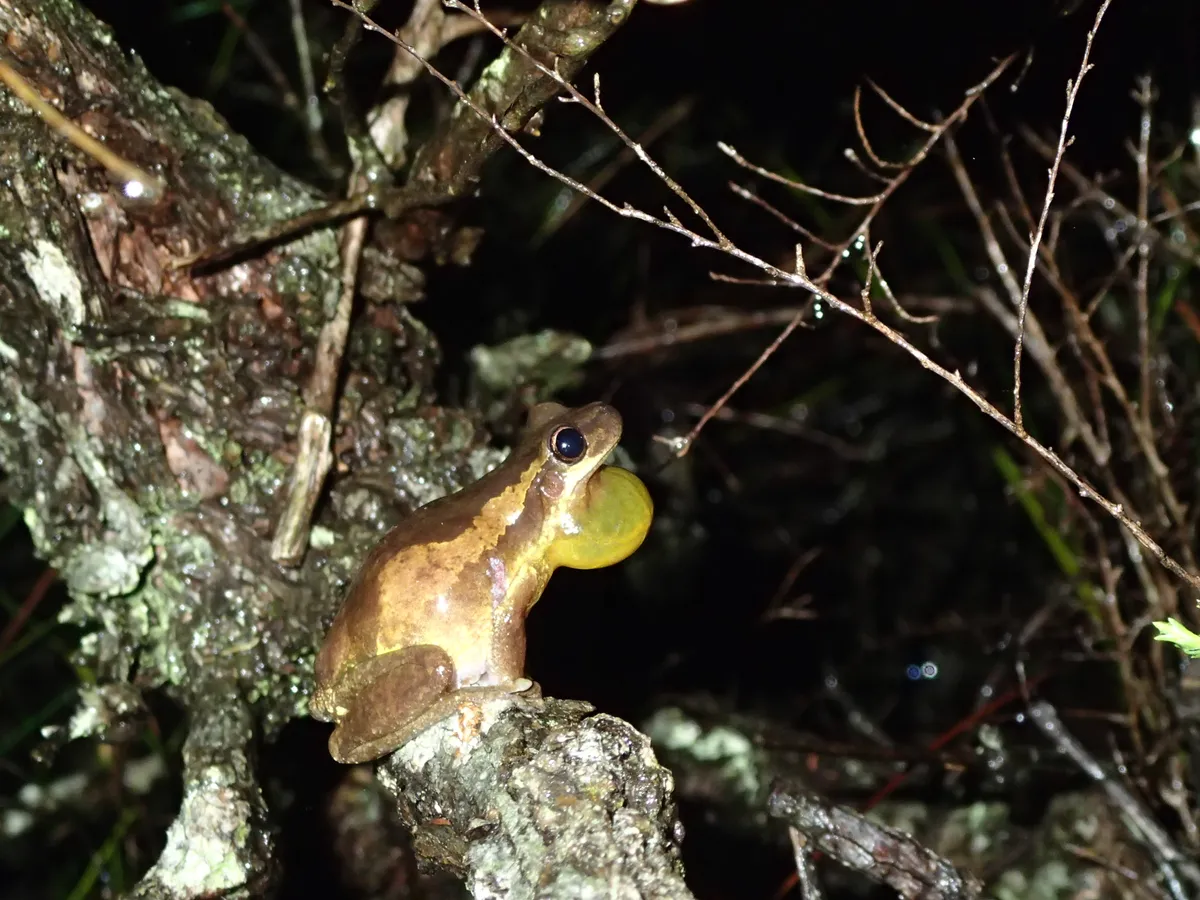
The bleating tree frog (now the robust bleating tree frog, Litoria dentata) is a familiar frog species to many eastern Australian residents, with its high-pitched call that described as almost painful to listen to, and one of the loudest calls of any Australian frog. However, it turns out that the species is actually three different species, with two that are new to science: the screaming tree frog (L. quiritatus) and the slender bleating tree frog (L. balatus).
Citizen scientists across Australia can record and submit frog calls to the FrogID project, run by the Australian Museum, allowing scientists to improve the understanding and conservation of Australia’s 240-plus known species of frog.
A combination of differences between the calls, morphology, genetics and distribution separates the three species, all of which are thought to be common and widespread, and are found in both natural habitats and major cities.
The specific name ‘quiritatus’ is derived from the Latin verb ‘quirito’ which means a shriek or scream.
Read the full paper in Zootaxa.
Leaf-litter ant (Strumigenys collinsae), USA

This ant is one of six new species of Strumigenys ants described in a recent paper reviewing the genus in western North America. The holotype for S. collinsae was found in Colorado, and had been initially identified as S. ohioensis by the collector. It was part of a collection in the Field Museum of Natural History in Chicago which was being re-examined for this study. It can be distinguished from all the other North American Strumigenys species by its dentition.
The specific name of ‘collinsae’ celebrates the entomologist and civil rights advocate Dr Margaret S. Collins, who helped change the impediments she faced and serves as a role model for many, including the young scientist Maisha Lucas who helped with describing the new species and suggested this name.
Read the full paper in Zootaxa.
Churah Valley kukri snake (Oligodon churahensis), India
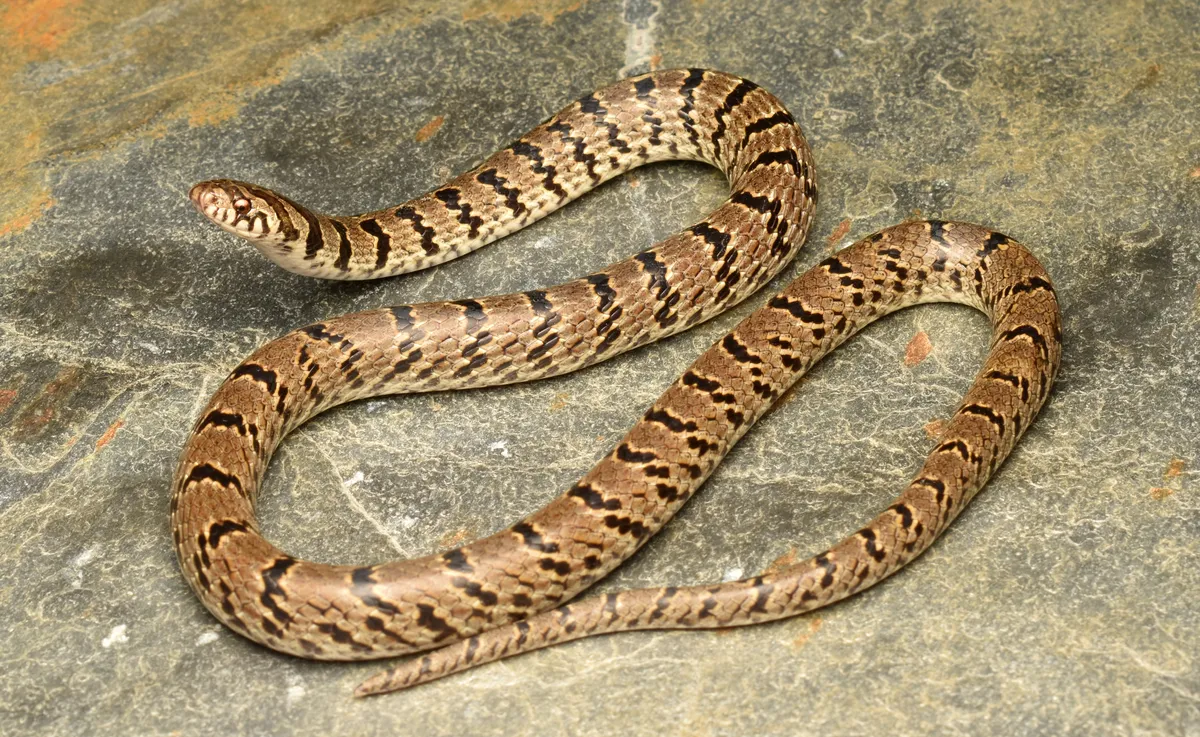
Like many people during the COVID-19 pandemic lockdowns, graduate student Virendar Bhardwaj spent time exploring his local area and photographing the wildlife he found in his backyard. One of these was a snake, which he found in June 2020, and he uploaded a photo of it to his Instagram, labelling it as a kukri, which is a type of snake named after a Nepali dagger due to its curved teeth.
His Instagram post caught the eye of the scientist Zeeshan Mirza at India’s National Centre for Biological Sciences, who thought that it looked a bit different to known species of kukri.
Further morphological and genetic analysis of a male and a female of this species, a snake that was familiar to locals, revealed that it was in fact a species undescribed by science. The lack of certain types of teeth suggested to researchers that its diet likely consisted mostly of eggs.
The specific name of ‘churahensis’ is derived from the Churah Valley in the Western Himalayas, where Bhardwaj found the species. It’s thought that there may be more undescribed species in the region.
Read the full paper in Evolutionary Systematics.
Star octopus (Octopus djinda), Australia

Octopus djinda is a new species of octopus in the larger global O. vulgaris group. Until recently, it was believed that O. vulgaris was found around the world, but taxonomic work has found a number of separate cryptic species in the group. This paper builds on previous genetic work that indicated differences between non-overlapping populations of the gloomy octopus (O. tetricus), also known as the common Sydney octopus.
O. tetricus was previously thought to be found on both the eastern and western coast of Australia, and it was believed that the populations maintained connectivity via larval dispersal on ocean currents. However, this new paper shows that the western population, between Shark Bay and Cape Le Grand, is a distinct species. As the species is caught as part of a sustainable fishery managed by the Department of Primary Industries and Regional Development, it's not believed to be in any danger of extinction. Every individual caught and documented, and extensive biomass estimates are calculated to ensure that no population decline is likely to occur.
The species name was chosen to contrast with that of its east coast relative, the gloomy octopus. Both the common English name and the scientific name come from the language of the local aboriginal Nyoongar people, with ‘djinda’ meaning ‘star’.
Horsehair worm (Acutogordius olivetti), Peru
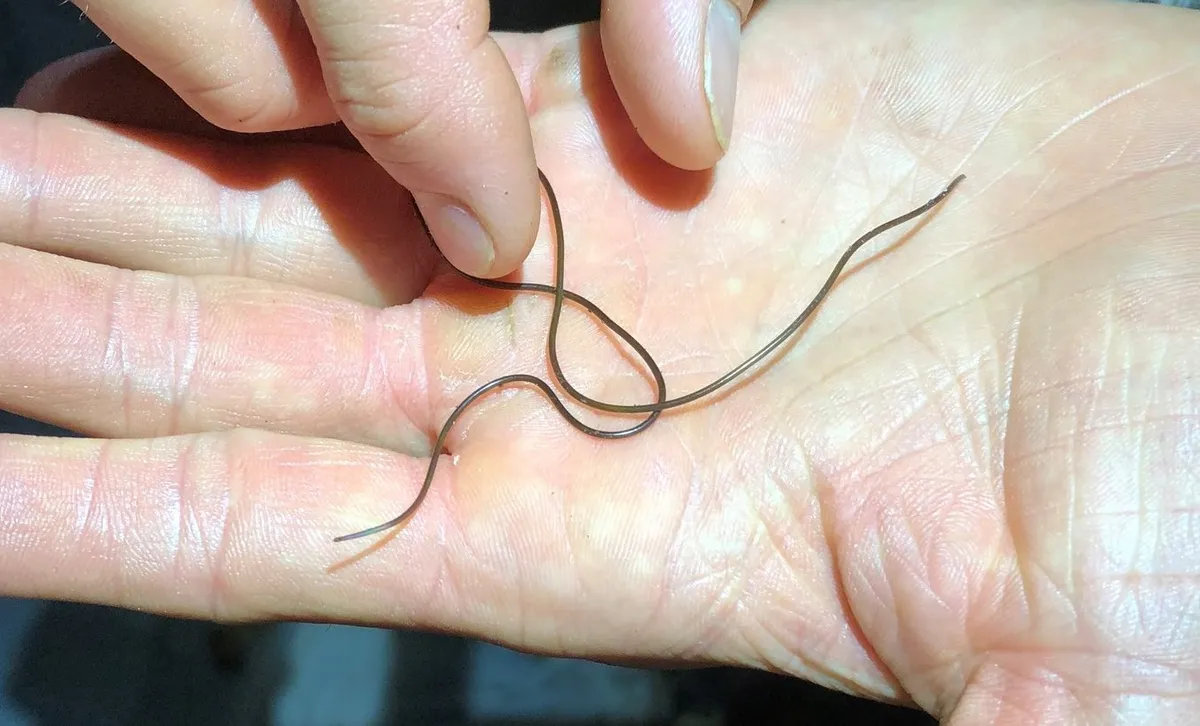
The accidental squashing of a bush-cricket at a Mercury Vapour light trap resulted in a newly described species of horsehair worm for Peru. The light trap was being run as part of a citizen science expedition to document the fauna of the area, part of the Madre de Dios region in southern Peru.
Once the worm sensed that its bush-cricket host was doomed, it exited from the body and was collected in a tube by the researchers. It measured 165mm in length and 0.95mm in diameter and was found to be a male.
Another citizen science expedition is planned, as it’s believed that there’s likely to be a number of undescribed species in the area.
The specific name of the species comes from the local river, the Olivetti, which is close to where the cricket and worm were found. Until recently, no horsehair worms were known from Peru. This paper brings the total to eight, with four described to species level, and another four to genus level.
Read the full paper in Spixiana (via the website of Ross Piper, one of the paper’s authors).
Ramari's beaked whale (Mesoplodon eueu), Southern Hemisphere

Indigenous knowledge and science combined to confirm that a beaked whale found in Southern Hemisphere was a distinct species from the True's beaked whale that is found in the North Atlantic, bringing the total of beaked whale species fo 24. Almost a decade ago, a dead female beaked whale was found washed up by the local iwi (tribe) of Ngāti Māhaki, on the west coast of Te Waipounamu (South Island), Aotearoa New Zealand.
This individual was a female, measuring five metres in length and pregnant, and the iwi named her Nihongore. She was uncovered by renowned Mātauranga Māori whale expert Ramari Stewart, raised by her elders in the in the traditional Māori knowledge of the moana (sea), who then sent the bones to Te Papa Tongarewa Museum. New Zealand researchers examined her and, with international collaborators, found that she was morphologically and genetically different to the True's beaked whale. Combined with specimens from South Africa, the Ramari's beaked whale was described as a separate species.
Both the common name and the scientific name honour indigenous communities in both South Africa and Aotearoa New Zealand. The majority of South African strandings occur in the land of the Khosian people, so the scientists worked with the Khosian council to choose the word //eu//‘eu, latinised to ‘eueu’, as the species’ scientific name, which means ‘big fish’. The common name honours Ramari Stewart, the first time a cetacean has been named after an Indigenous woman, and also translates to ‘a rare event’ in Te Reo, the Māori language, which was deemed appropriate for the elusive nature of this group of cetaceans. A video by the University of Auckland explores its etymology.
Read the full paper in the Proceedings of the Royal Society B.
Weevil (Trigonopterus ewok), Sulawesi
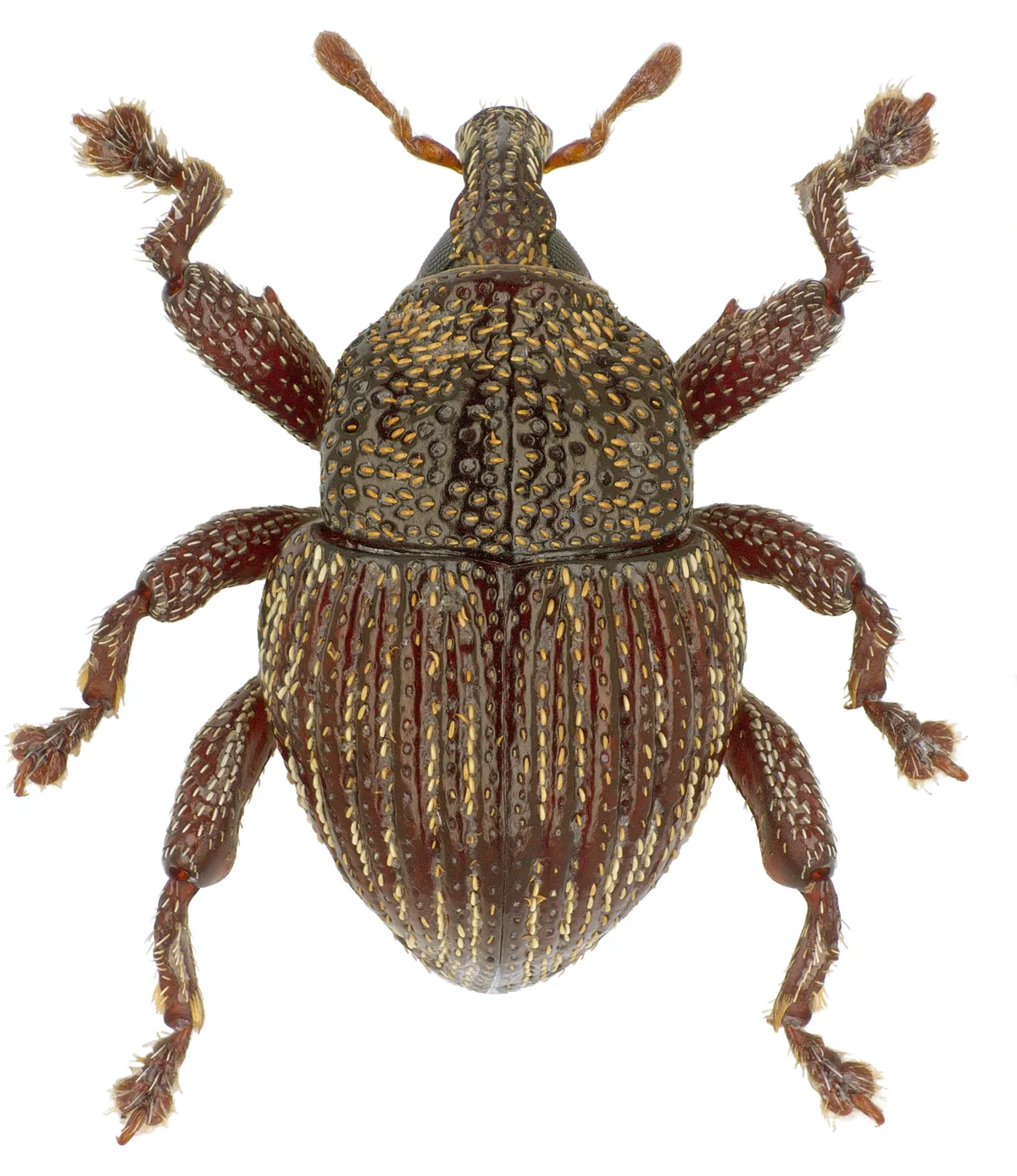
The number of Trigonopterus species, a genus of flightless weevils found in the Indo-Australian-Melanesian archipelago, dramatically increased in late October with an impressive 28 newly described species. All of these were described from Central Sulawesi and the majority were collected during just two field trips by Raden Pramesa Narakusumo, the lead author on the paper and the curator of beetles at the Museum Zoologicum Bogoriense in Indonesia.
He worked together with Alexander Riedel of the Natural History Museum Karlsruhe, an expert in this genus whose research trip to Papua New Guinea was cancelled due to the pandemic, resulting in studying these specimens instead.
The specific names for the species come from a range of sources including ‘ewok’ after the the Star Wars species (joining T. chewbacca, T. yoda and T.porg), ‘gundula’ and ‘unyil’ after Indonesian movie characters, and even ‘corona’ to reflect the impact of the pandemic on this project.
Although the 28 newly described species may be a big jump, it’s a small fraction compared to the 2019 paper by Riedel and Narakusumo where they described an astonishing 103 Trigonopterus weevils. Again, these newly described species were all from Sulawesi.
Read the full paper in ZooKeys.
Tiger beetle (Eunota mecocheila), Mexico
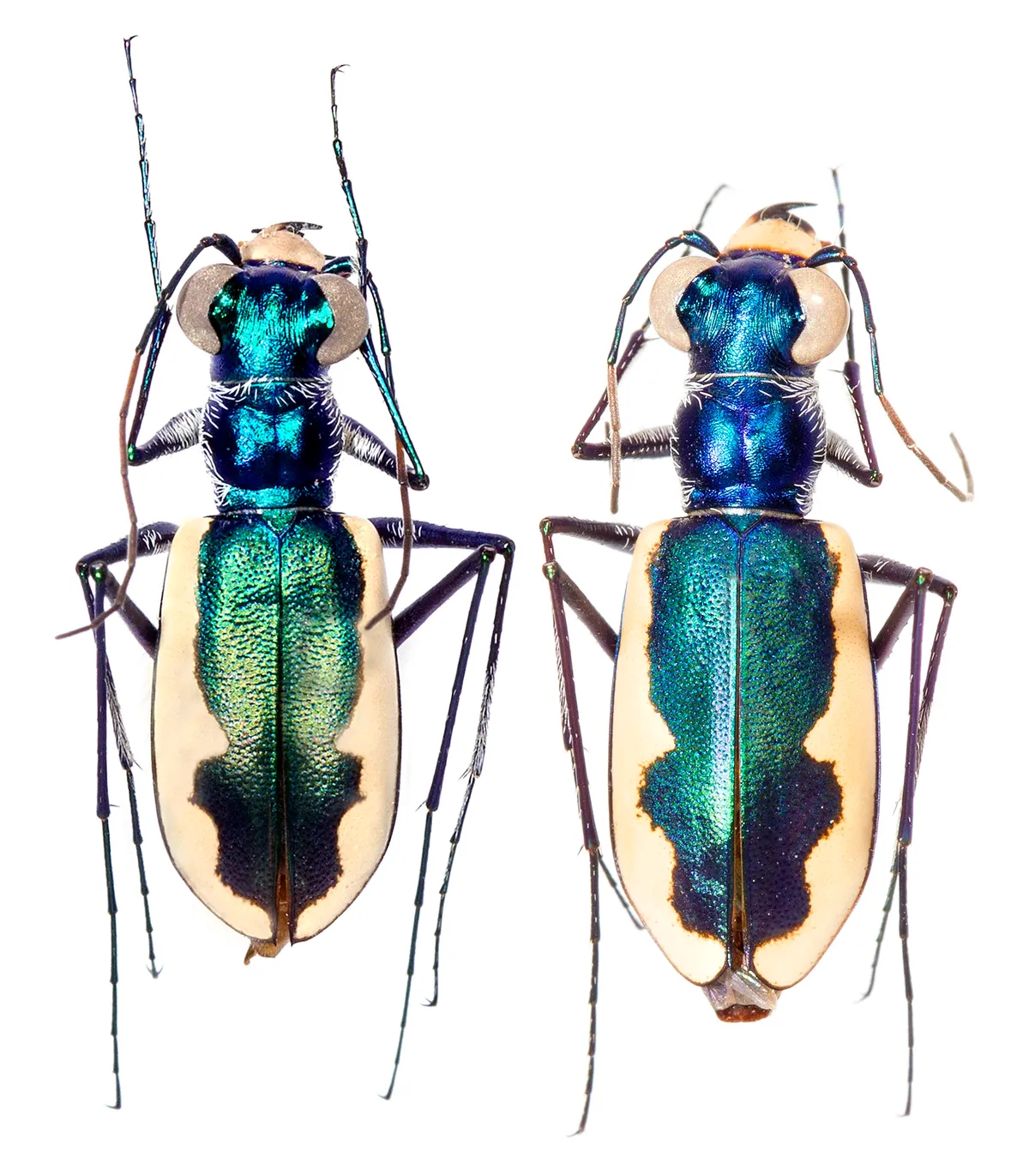
A beautifully coloured tiger beetle species that so far has been found in only two saline and muddy ditches. A total of 18 specimens were collected back in 1992 and 1994, and have since been held in museums and private collections.
Little is known about the full distribution of this species, as it was collected from two sites in the state of Coahuila in northern Mexico. The extension northwards of the ridge and basin in which the species was found could mean that it may also be found in west Texas in the USA.
The species’ scientific name of ‘mecocheila’ comes from its labrum, a flattened area of cuticle comparable to an upper lip, which is more elongated than in similar species. The word is derived from Greek where ‘meco-’ means long and ‘-cheila’ means lip.
Read the full paper in Plos One.
Gem orchid (Corybas papillatus), Thailand
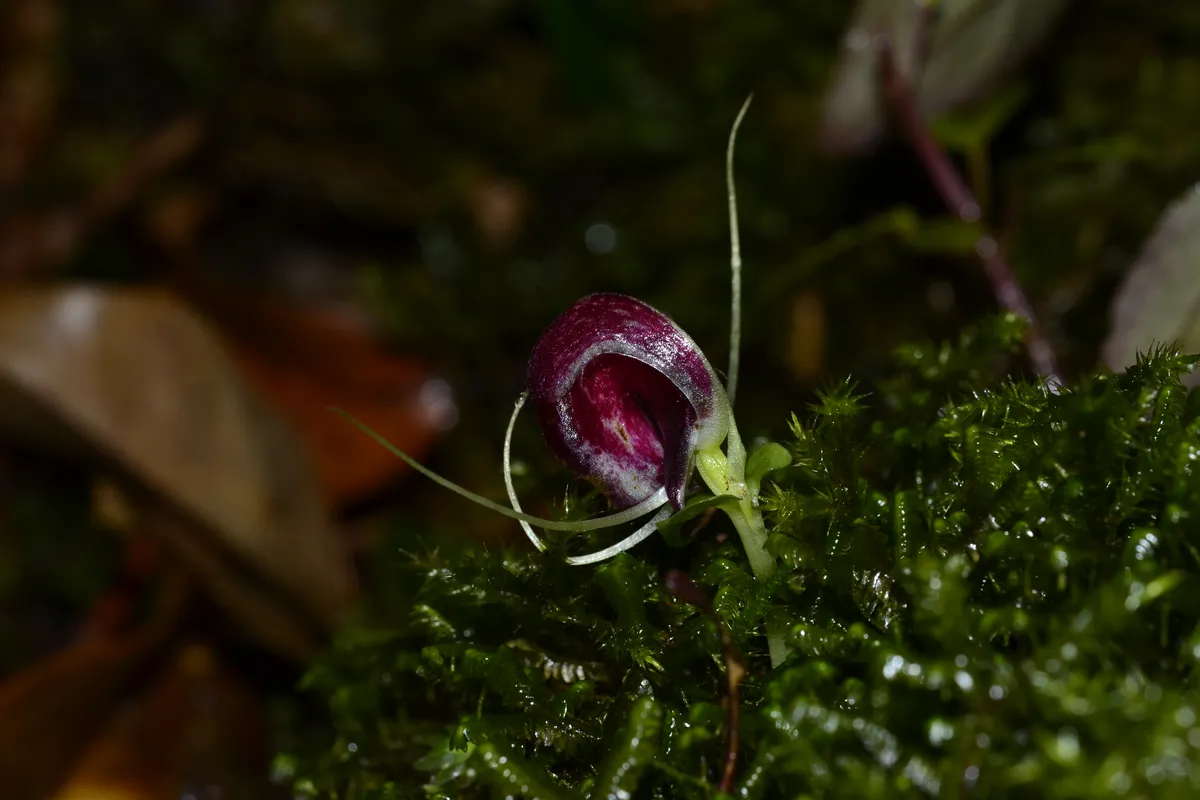
Measuring only a few centimetres in height, this tiny little gem orchid was discovered near the summit of Khao Luang Mountain in Khao Luang National Park in southern Thailand, and is only the third species of the Corybas genus to be described from the country.
Staff from the Bangkok Forestry Herbarium spotted the gem orchid growing amongst bryophytes at roughly 1,700m above sea level and noted that it had a unique combination of characters that didn't match any other known Corybas species. Further analysis confirmed that it was a species new to science, and the specific name of ‘papillatus’ refers to the irregular papillae on one of the sepals.
Read the full paper in PhytoKeys.
Nujian pit viper (Gloydius lipipengi), China
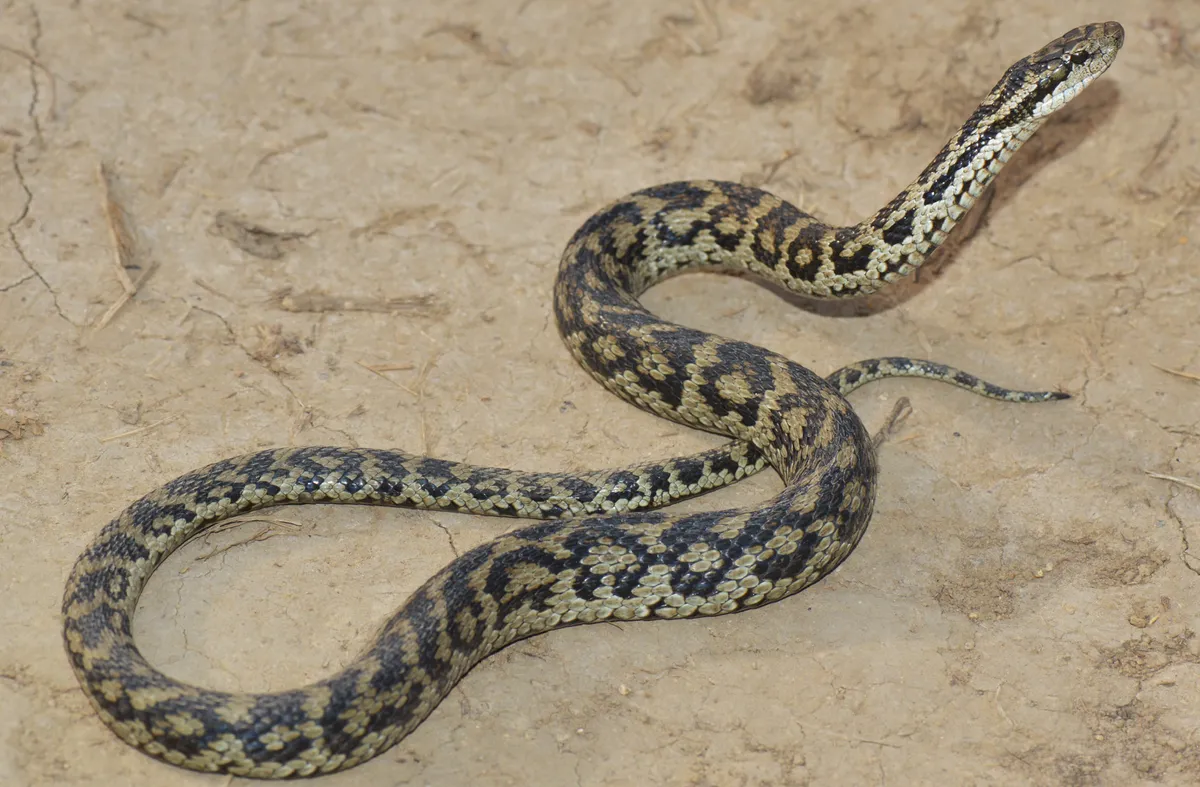
This is one of two new species of venomous snake which have been described by researchers studying the molecular phylogeny of pit vipers in Asia, increasing the number of species in the Gloydius genus to 23. Several new species have been described from this group recently, and some former subspecies have also been elevated to full species level.
The species’ scientific name is dedicated to Professor Pi-Peng Li, a professional herpetologist at Shenyang Normal University who has been studying the herpetological diversity of the Qinghai-Tibet Plateau and the Master’s supervisor for the paper’s lead author.
Read the full paper in ZooKeys.
Wallace's Sphinx moth (Xanthopan praedicta), Madagascar
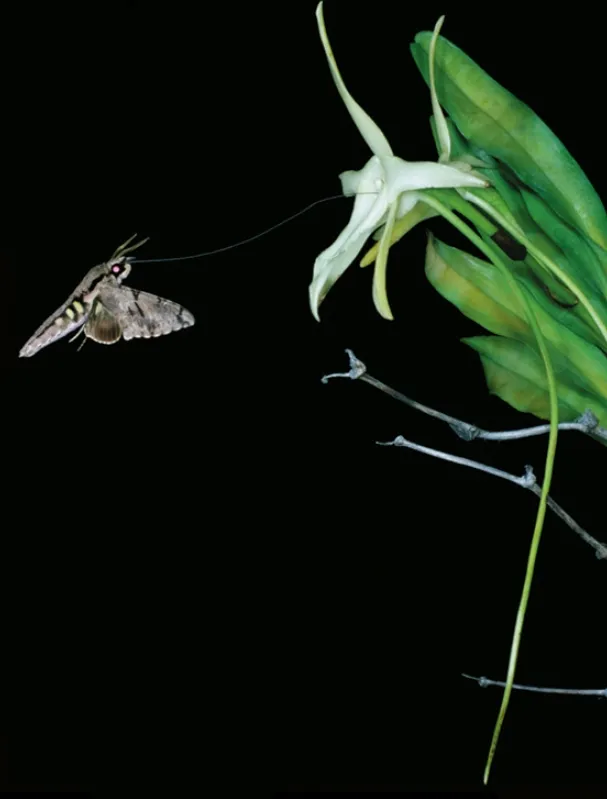
With the longest moth proboscis in the world of an astonishing 28.cm, this moth species is named after Alfred Russell Wallace. It is sometimes known as Darwin's moth too, for Charles Darwin. This is because the two founders of the theory of evolution both predicted that such a moth should exist.
In 1862, Darwin received the orchid Angraecum sesuipedale (now referred to as Darwin's comet orchid) and hypothesised that there were be a long-tongued moth capable of pollinating it. It's said that he exclaimed, “Good Heavens what insect can suck it?!”.
Not long afterwards, Alfred Wallace predicted that this moth would be a member of the Spingidae group and a relative to the moth species known as Morgan's Sphinx (Xanthopan morganii). This moth was finally discovered in Madagascar over 30 years later, and deemed to be a subspecies of Morgan's Sphinx, and given the subspecies name of ‘praedicta’ to reflect the predictions.
However, recent morphological and genetic work has proven that it is in fact a separate species, and it has now been promoted to species rank, dropping the ‘morganii’ from its scientific name.
Read the paper in Antenor (via ResearchGate).
Moss (Bryum bharatiense), Antarctica
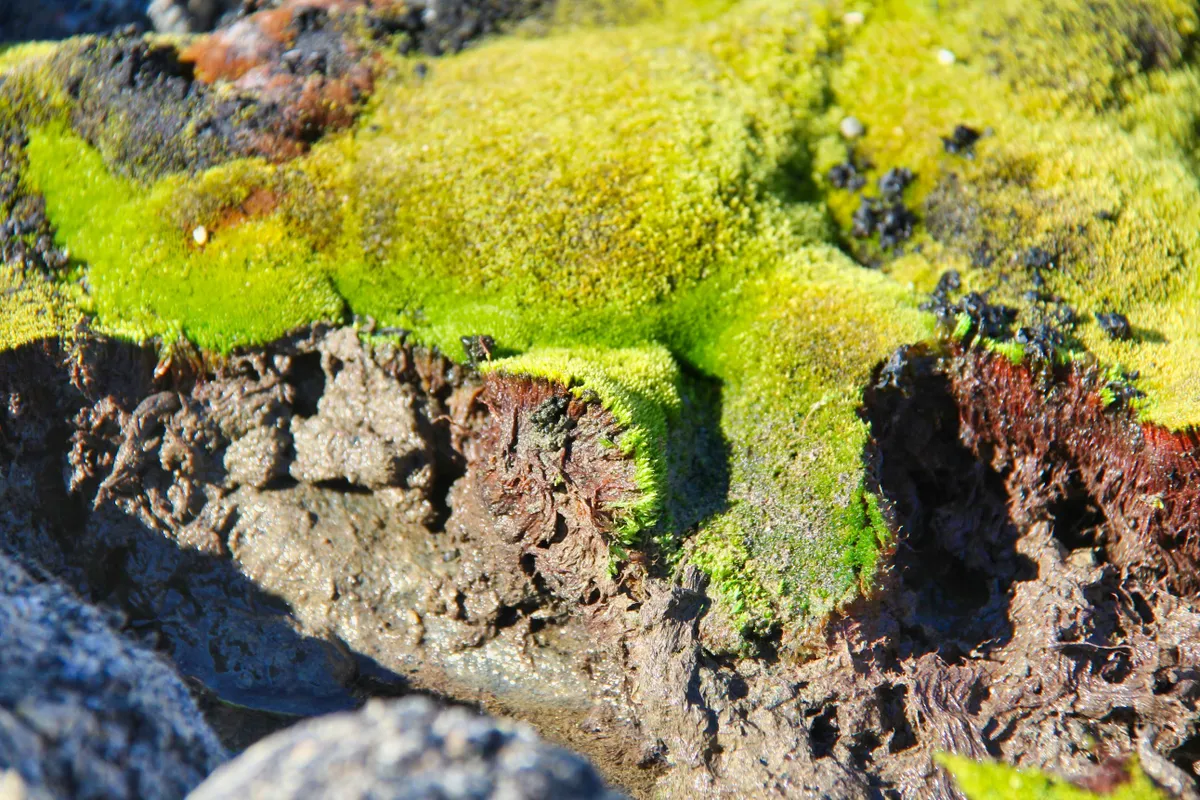
Biologists from the Central University of Punjab discovered this moss during a six-month-long expedition to Antarctica in 2017, and after five years of study, have confirmed that it is a previously undescribed species.
The expedition was the 36th by Indian scientists, and Professor Felix Bast came across the species at Larsemann Hills, which overlooks the Southern Ocean and is near to Bharati, one of the India's Antarctica research stations.
Bharati is a Hindu goddess, sometimes known as Saraswati, and is the goddess of knowledge and wisdom. The scientific name of the new moss species also celebrates the goddess, with the specific name of ‘bharatiense’.
Read the full paper in the Journal of Asia-Pacific Biodiversity.
Feiruz wood lizard (Enyaliodies feiruzae), Peru
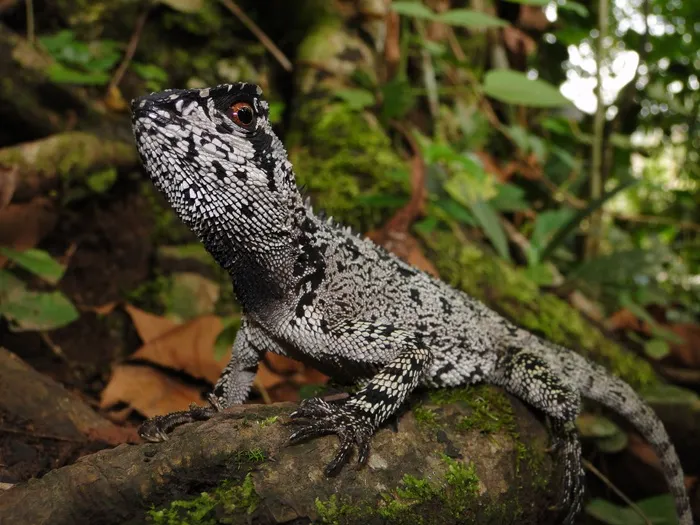
A new species of dragon-like lizard called Enyalioides feiruzae has been formally described, following seven years of field studies, which involved hand-picking sleeping individuals from plants at nights.
The lizards, particularly the males, can come in a variety of colours ranging between turquoise, green, grey and brown, with lines on their backs and spots on their sides.
Part of the wood lizard genus, Enyalioides, they’re found in northern South America and Panama, and are very similar to the geographically separated E. rudolfarndti. E. feiruzae is found in the basin of the Huallaga River in the Peruvian Andes, an understudied area due to various conflicts with terrorist organisations and drug traffickers in the 1980s and 1990s.
The name comes from Feiruz, a female green iguana, whose owner Catherine Thomson supported the taxonomic research through the BIOPAT initiative.
Read the full paper in Evolutionary Systematics.
Killer tobacco plant (Nicotiana insecticida), Australia
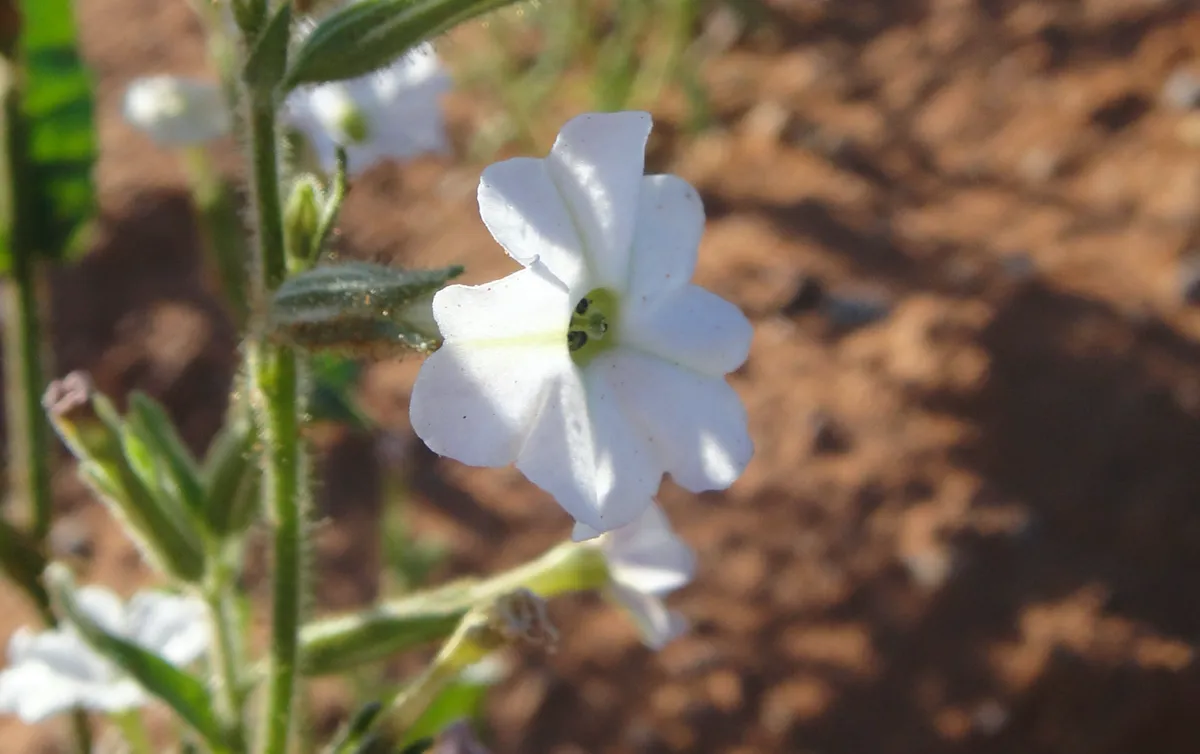
This wild tobacco plant is one of seven newly described species in the Nicotiana genus. The ‘killer tobacco plant’ (N. insecticida) was so-named as it’s covered in sticky glands that capture and kill small insects – the first wild tobacco plant to do so. It is not known if it gains nutritional benefit from the insects and thus isn’t yet classified as carnivorous.
All the new species are found in the Australian arid zone. N. insecticida was found by a truck stop on the Northwest Coastal Highway in Western Australia.
Read the paper in Curtis's Botanical Magazine.
Frog (Synapturanus zombie), Guinea Shield

This underground-dwelling frog is one of three new Synapturanus species. The call of the male can only be heard during or after heavy rainfall. To find the animals, scientists need to dig them out of the ground using their bare hands (usually getting soaked in the process). It’s this rather eerie scenario that has given rise to the name Synapturanus zombie.
All three frog species are found in an incredibly biodiverse region of South America known as the Guiana Shield. The scientists believe there may be six times as many Synapturanus species than have been described so far.
Read the paper in Zoologischer Anzeiger.
Brittlestar (Ophiojura exbodi), southwest Pacific Ocean near New Caledonia

This brittlestar is the only living representative of a lineage that split from its closest relatives180 million years ago, just as the dinosaurs were starting to go full tilt. Not only does Ophiojura exbodi get a genus all to itself, but a whole new family was created to accommodate it. Its most obvious distinguishing feature is its eight arms rather than the usual five.
Collected from a seamount – a submarine mountain – called the Durand Bank, near New Caledonia in the Pacific, its distinctive skeletal features are strikingly similar to fossils found in early Jurassic rocks from Normandy.
Read the paper in Proceedings of the Royal Society B.
Benin tree hyrax (Dendrohyrax interfluvialis), West Africa

The barking calls of tree hyraxes in the forests of southeastern Ghana, southern Togo and Benin, and southwestern Nigeria are unusual in sounding distinctly different to the shrieks from tree hyraxes elsewhere. Enough for researchers to investigate further.
As nocturnal mammals, tree hyraxes are very difficult animals to study, particularly as their eyes don't shine at night. Scientists studied recordings of their calls, the skulls of 69 adult tree hyrax specimens in six museum collections in Europe and North America, plus museums skins, carcasses of hyraxes killed by hunters and camera trap images.
Combining the barking calls with the anatomical and genetic differences, the researchers were able to conclude that these barking tree hyraxes were actually a different species to other tree hyraxes.
The specific name of ‘interfluvialis’ of this newly described species is inspired by its location between the Niger and Volta rivers, which are the largest rivers in West Africa. The English common name refers to the proximity of the Benin City in Nigeria, once the capital of the Benin Empire which stretched from the Niger to present-day Ghana.
It's thought that the large rivers were key in the Benin tree hyrax evolving into a separate species as they do not cross water easily, so would've been isolated from other populations and limited in their dispersal for thousands of years.
Read the paper in the Zoological Journal of the Linnean Society.
Ant (Strumigenys ayersthey), Ecuador

When a species is named after a person, convention holds that the name ends in the suffix -ae (after females) or -i (males). However, when naming this trap-jaw ant after artist Jeremy Ayers (one of Andy Warhol’s Superstars under the pseudonym of Silva Thin), entomologist Douglas B. Booher spoke to former R.E.M. singer Michael Stipe and together they decided to use a new suffix of -they instead.
“I knew Jeremy, and knew of no other human that better represented the pan and inclusive world of humans,” says Booher. “He was also a lover of biodiversity, so it just seemed to fit.”
But what if the person being honoured identifies as neither male nor female? The solution, in the case of this trap-jaw ant named after artist Jeremy Ayers, was to use ‘they’ as the suffix.
Just a single specimen has been collected so far, in tropical forest in northern Ecuador, by German entomologist Phillip Hoenle. Extensive efforts to find more proved fruitless, suggesting it is very rare. Its spring-loaded jaws may be a specialisation for catching nimble springtails.
Read the full paper in ZooKeys.
Centipede (Scolopendra alcyona), Japan
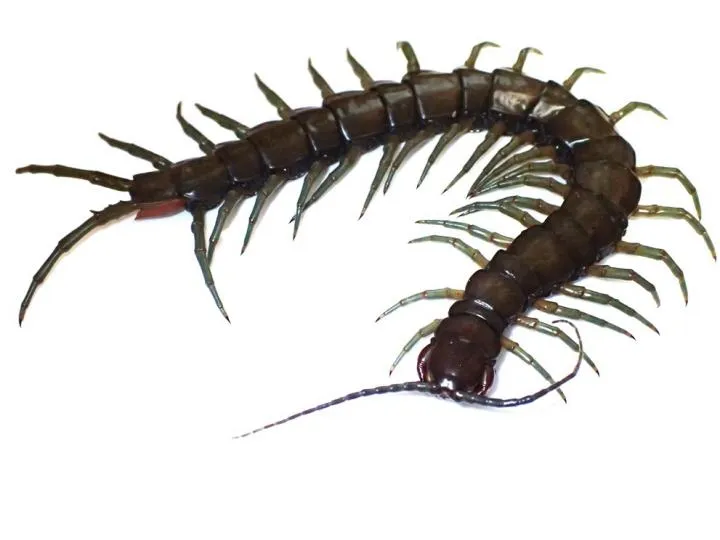
This huge centipede – 20cm long and 2cm broad – is only the third amphibious species known to science. It comes in blue-legged and yellow-legged varieties, and is named after Alcyone of Greek mythology, who was turned into a kingfisher – an allusion to its colour and proficiency in and out of the water.
S. alcyona is the first new centipede to be described from Japan in 143 years. It is found under rocks near forest streams on the Ryukyu Islands. Several individuals escaped capture by plunging into the water.
Greta spiders (Thunberga), Madagascar and Mayotte
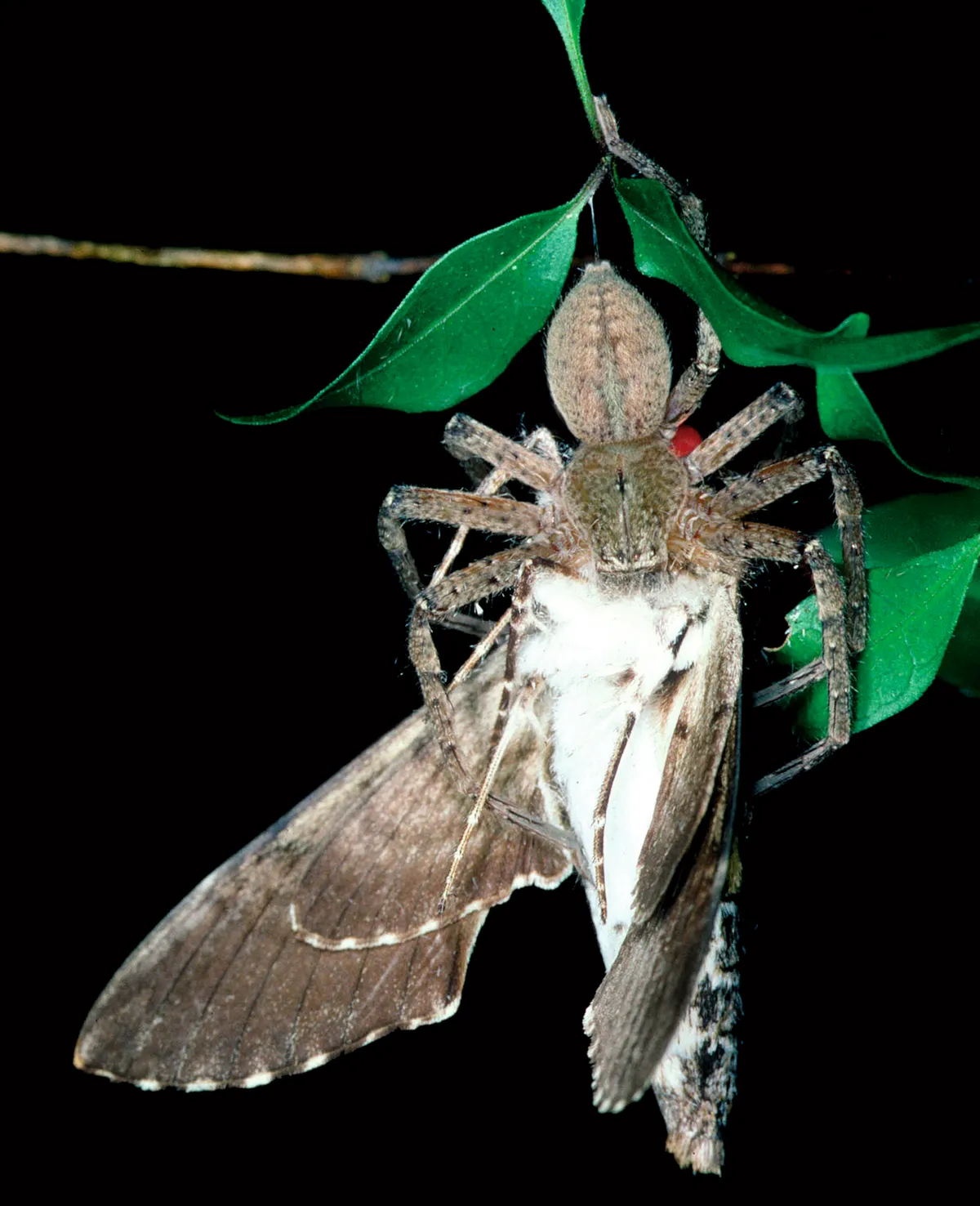
When the huntsman spider genus Thunberga was named last year after a certain Swedish environmentalist, it contained just a single species. Now, it contains 26. Some of the 25 new ‘Greta spiders’ have been named in honour of other inspirational young people, including human rights activist Malala Yousafzai and environmental entrepreneur Boyan Slat.
All 25 new species hail from Madagascar and its tiny neighbour Mayotte. The females of many of these ambush predators bear numerous scars on their bodies, which are thought to be inflicted by the fangs of males as they grasp them during mating.
Read the paper in Arachnology.
Chameleon (Tricoeros wolfgangbeohmei), Ethiopia
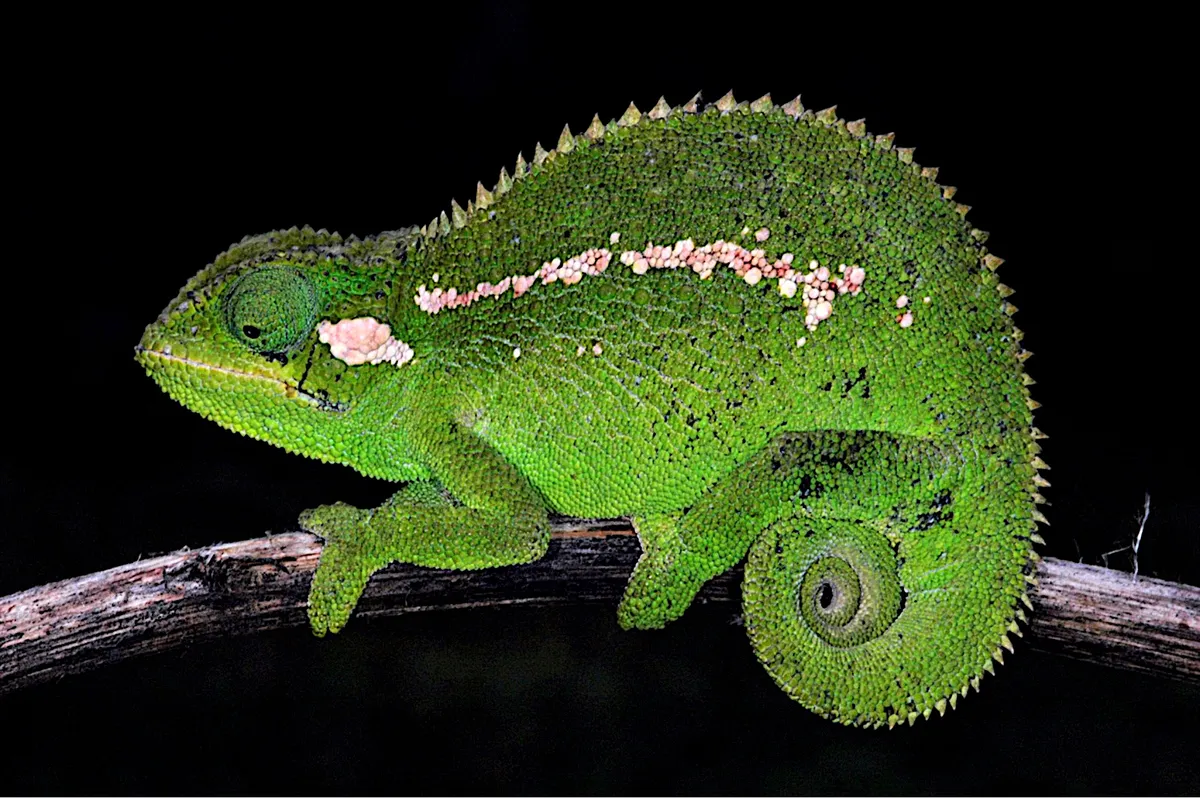
The biodiversity hotspot of the Bale Mountains in south-central Ethiopia has revealed another newly described species in the shape of a relatively small chameleon, measuring roughly 15cm in length. The species can vary in colour from bright green to yellowish or brownish.
There are two other known Triceros species that are also endemic to this area: T. balebicornutus and T. harennae.
The ‘wolfgangbeohmei’ in its scientific name honours the scientist Wolfgang Böhme, a senior herpetologist at the Zoological Research Museum Alexander Koenig in Bonn, Germany.
Read the full paper in Zoosystematics and Evolution.
Snake (Stegonotus aplini), Papua New Guinea

If snakes were hot drinks, Stegonotus aplini would be a latte macchiato. It’s the seamless transition from milk- white to coffee-brown along its length that sets this serpent apart from its closest relatives, which tend to be a uniform shade of grey or brown.
In the region of southern Papua New Guinea where S. aplini hunts on forest floors at night, local people are highly fearful of the species – even though it is apparently harmless to humans. Perhaps this is because of its superficial resemblance to a more distantly related, venomous snake that also occurs in the region.
Chameleon (Brookesia nana), Madagascar

A tiny chameleon the size of a seed could be a contender for the title of the smallest reptile on Earth. The male nano-chameleon (pictured) has a body just 13.5mm long, yet its genitals are one-fifth of its body size, possibly allowing it to mate with the larger female.
An international team of eagle-eyed scientists spied the reptile within degraded montane rainforests in northern Madagascar. Fortunately, its habitat has been placed under protection, but the researchers have recommended that the bijou chameleon is listed as Critically Endangered on the IUCN Red List of Threatened Species.
Read the full paper in Nature.
Bat (Myotis nimbaensis), Guinea
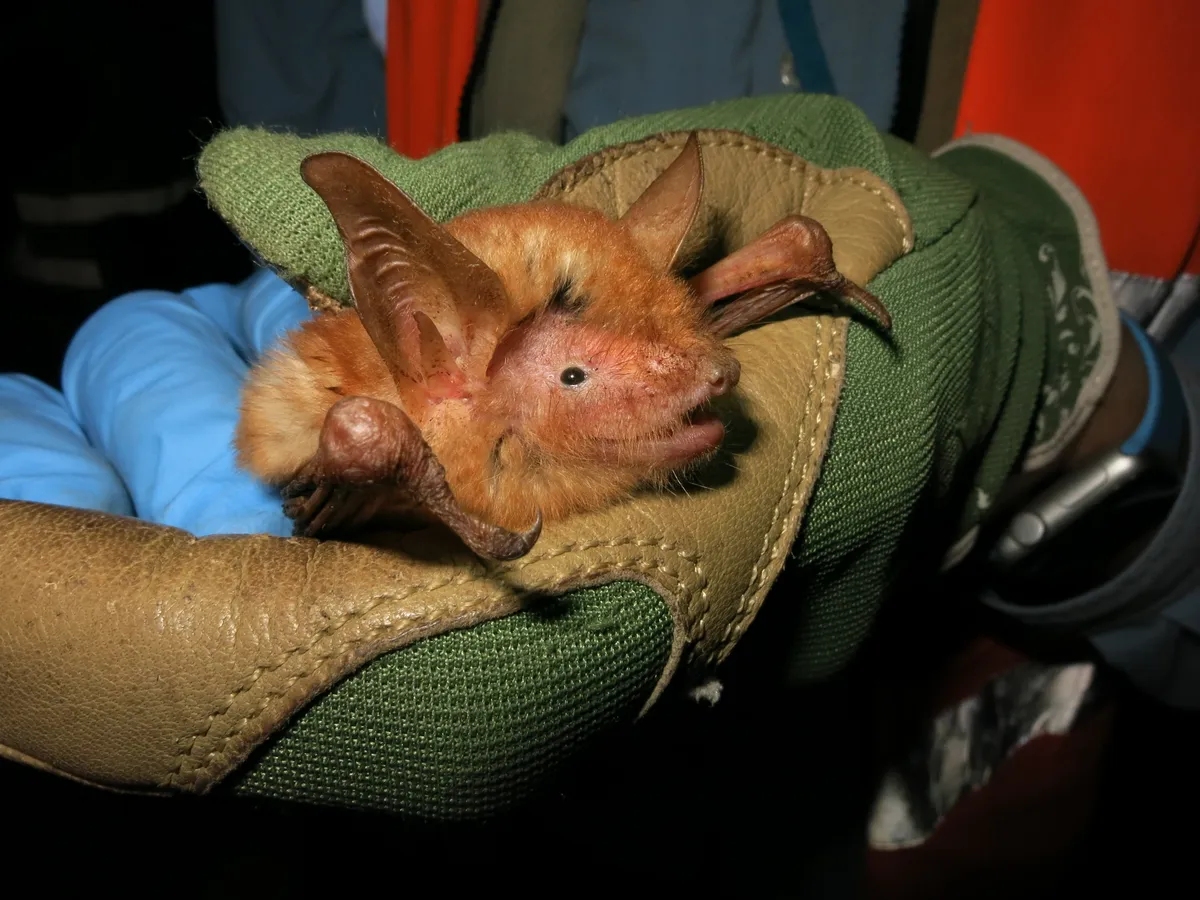
Researchers surveying bat populations in natural caves and mining tunnels, known as adits, in the Nimba Mountains in Guinea in 2018 were surprised to find a striking and large orange and black bat, which didn’t match the descriptions for any other locally known species.
Further analysis of the morphological, morphometric, echolocation, and genetic data, alongside comparing it to bats held in collections at multiple museums, revealed that it was a species unknown to science. It was named Myotis nimbaensis, with the specific name deriving from the Nimba Mountains where it was found. Described as a chain of “African sky islands”, this mountain range is home to remarkable biodiversity.
The scientists believe that this species is likely to be Critically Endangered when assessed for the IUCN Red List, and could be the second bat species to be found only in these mountains, alongside the Critically Endangered Lamotte’s roundleaf bat.
Read the full paper in American Museum Novitates.
Recent reclassification of species and subspecies:
- News (2021): Analysis of skulls reveals that river dolphins in South Asia are two separate species
- News (2020): Gentoo penguins should be split into four species, rather than four subspecies
- News (2019): Newly described salamander in museum is the world's largest amphibian
- News (2017): New identity for UK grass snake
- News (2016): Giraffes are not one species, but four
